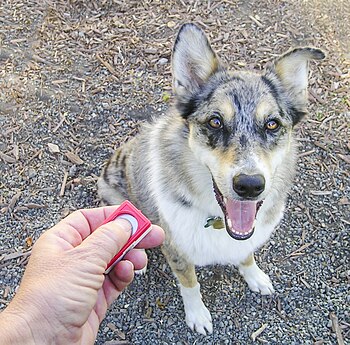How To Train Your Dog Not To Bark At The
Door
Canine training  e best investments you make in your dog. It will give your dog a special place in the family, as you have a dog who knows his place in your family and loves it.The information in this article offers insight into the necessity of having a well-trained dog.
e best investments you make in your dog. It will give your dog a special place in the family, as you have a dog who knows his place in your family and loves it.The information in this article offers insight into the necessity of having a well-trained dog.
When corrected your dog verbally, make those corrections short, concise wording. Don't drag on and on about how bad your dog is. Just say "no" and show them the behavior you expect.
Rewarding your dog properly and generously is the key to training.Giving them treats at the right time and with the proper amount is important. This is because a dog does not always understand what it's being rewarded for when they do not get it at the proper time.
Be sure that your dog healthy diet. A poor diet can cause your dog many problems. It can make your dog behave badly and affect their health. Something as simple as improving their diet can sometimes have a dog more obedient.
A dog has an inquiring mind and will obsess about one thing until its attention. With frequent practice, your dog should be able to pay more attention to your orders.
Puppies will grow up quickly. Choose a crate which will be suitable for the puppy when they hit adult size. The dog will need sufficient room to rest and turn around or laying down.
Do not ever use shock collars. They may not work well and are far too expensive. They can also discourage good behaviors as they inhibit your dog to be confused about all their behaviors.
Start training your dog with something that will be easy for him to learn. This will give them instant success and your training regimen. This will give you much better results during the training process.
Do not drag out your training sessions.If you want a long session, let your dog take a break to get some energy out.
Changing your vocal tone to reflect emotions is useful in getting the point across to your dog. Be firm with your command, but vary your tone depending on what you are trying to get the dog to do.
You need to practice having your dog. Your dog should return when called.Build this essential behavior in steps and your dog will obey despite many distractions. Recall could save your pet's life, but it can also be life-saving.
When training your dog, use many resources, books, dog magazines and books about the particular breed of dog that you wish to train.Talk to other owners of the same breed.You can make adjustments based on the information you get.
A well-fed dog who has plenty of fun play toys for entertainment is much less likely to dig through your trashcans. Empty your trash regularly, especially if they contain mean and/or bones.
To teach your pooch the "sit" command, have him in a standing position and hold a treat in the air. Pass the treat above its head so that your hand behind it. This will cause him to hold his head up while following your hand. Dogs are likely to sit when they do this.
Do not let the pressures of your training sessions with your dog. If your dog has not misbehaved, do not treat him badly!
Develop Relationships
Dogs that don't like being away from their owners should develop relationships with multiple people. The dog needs to develop relationships to other people in the world besides you.
Never yell at a dog if he or she excessively barks. Shouting at a barking dog may encourage them to bark more because they think that you are reacting positive to their behavior.
Get your dog ready for his trips to the veterinarian. Gently run your hands across his whole body, praising him when he responds well. Prepare him to be more tolerant with having his paws or looking at his teeth looked at.
Having been said before, getting a dog trained will be a great investment. Without the advantages of proper training, a dog will overrun his home, reek havoc on his family and probably not be very wanted. Apply these tips to plan how you are going to train your dog and turn him into a loved member of the family.





